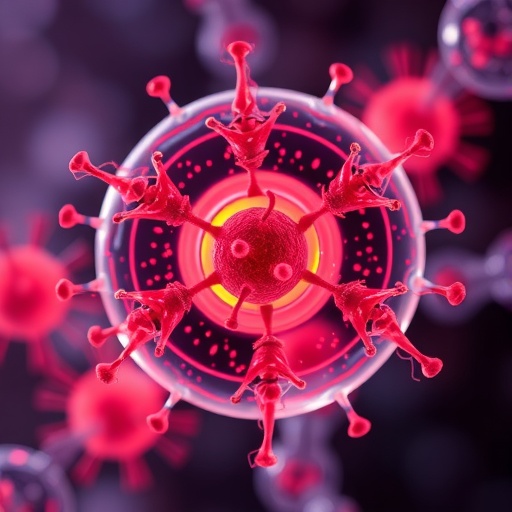In the ongoing battle against drug-resistant fungal infections, a groundbreaking discovery has emerged from the realm of natural product research. Scientists have identified a novel class of compounds known as coniontins, belonging to the lipopetabiotic family, which demonstrate potent antifungal activity specifically targeting the notorious pathogen Candida auris. This elusive and formidable microorganism has been responsible for numerous healthcare-associated outbreaks worldwide, often evading standard antifungal therapies and posing a grave public health threat. The newly characterized coniontins hold promise as a fresh and effective weapon in combating this escalating fungal menace.
Candida auris has been a source of escalating global concern due to its rapid emergence as a multidrug-resistant yeast that can colonize hospital environments, leading to outbreaks that are difficult to control. Unlike other Candida species, C. auris shows remarkable resilience to commonly used antifungal agents, including azoles, echinocandins, and polyenes, thereby complicating treatment protocols. Researchers have been striving to find new pharmacological strategies that bypass these resistance mechanisms, and this new study represents a crucial stride forward by exploring untapped microbial sources for antifungal agents.
The research team utilized an extensive microbial natural product fractionation library—an advanced collection of biologically active compounds derived from diverse microorganisms that inhabit unique ecological niches. By systematically screening these fractions for activity against C. auris, they isolated and characterized several bioactive substances. The coniontins, identified through meticulous bioassay-guided fractionation and chemical analysis, emerged as standouts exhibiting significant inhibitory effects on fungal growth in vitro.
.adsslot_FclHaqzTXf{width:728px !important;height:90px !important;}
@media(max-width:1199px){ .adsslot_FclHaqzTXf{width:468px !important;height:60px !important;}
}
@media(max-width:767px){ .adsslot_FclHaqzTXf{width:320px !important;height:50px !important;}
}
ADVERTISEMENT
Beyond in vitro efficacy, the research also explored the potential for synergy between coniontins and existing antifungal drugs. Intriguingly, combination treatments revealed additive or even synergistic effects, suggesting that coniontins could be integrated into current therapeutic regimens to enhance their efficacy and potentially reverse resistance trends. Such combination strategies may significantly reduce the doses required and mitigate side effects associated with higher antifungal dosages.
The clinical implications of this research extend beyond candidiasis caused by C. auris. Given the conserved features of fungal membranes and potential cross-species activity, coniontins might serve as a blueprint for developing broad-spectrum antifungals. This is particularly urgent as invasive fungal infections continue to rise globally, exacerbated by immunosuppressive treatments, aging populations, and increased use of medical devices that serve as infection portals.
From a biotechnological perspective, the identification of coniontins paves the way for synthetic biology applications aiming to optimize production yields. Their natural microbial origin suggests that genetic engineering of producing strains or heterologous expression systems could allow scalable fabrication, overcoming typical limitations associated with natural product extraction. This would facilitate preclinical and clinical testing phases by ensuring sufficient compound availability.
Moreover, the study illuminates the importance of preserving microbial biodiversity and investing in comprehensive natural product libraries. Many therapeutic agents have historically been derived from microorganisms, yet large swaths of microbial diversity remain unexplored. By turning attention to these reservoirs, researchers reaffirm the potential to uncover novel chemical scaffolds with unique bioactivities, revitalizing drug discovery pipelines that have blunted over recent decades.
The coniontins’ discovery also raises intriguing questions regarding their ecological role in their native microbial communities. It is plausible that these compounds evolved as chemical defenses or communication molecules among competing microorganisms, reflecting nature’s intricate chemical arms race. Understanding these ecological contexts might further inform rational modifications to enhance antifungal potency or specificity.
This avenue of research exemplifies an interdisciplinary synergy between microbiology, chemistry, pharmacology, and clinical sciences. It showcases how collaborative efforts can harness cutting-edge technologies and fundamental biological insights to tackle critical medical challenges. The multidimensional characterization process—from isolation to mechanistic elucidation—sets a valuable precedent for future exploration of natural products.
The researchers underscore that while the current findings are promising, extensive in vivo studies and clinical trials remain necessary before coniontins can be considered for therapeutic use. Pharmacokinetic profiling, toxicity assessments, and efficacy in animal models of fungal infection will be crucial next steps. Only through rigorous validation can these compounds transition from laboratory curiosities to life-saving medications.
In summary, this discovery marks a significant milestone in antifungal drug development, addressing an urgent unmet medical need posed by Candida auris. The coniontins represent a compelling new class of antifungals capable of circumventing resistance and potentially restoring the effectiveness of fungal infection management. As the medical community grapples with the dangers of fungal superbugs, such innovations offer a beacon of hope for patients and healthcare systems worldwide.
The study’s publication in a leading scientific journal also highlights the importance of open-access dissemination of groundbreaking research, ensuring that oncologists, infectious disease specialists, pharmaceutical developers, and policymakers remain informed and can integrate this knowledge into broader antifungal strategies. The hope is that these scientific advances translate swiftly into clinical realities.
Ultimately, the discovery of coniontins exemplifies the power of exploring nature’s chemical diversity with modern analytical tools, reinforcing the enduring value of natural products in drug discovery and public health. This breakthrough renews optimism in the fight against dangerous fungal pathogens and promises to reshape antifungal therapeutics in the coming years.
Subject of Research:
Antifungal compounds (coniontins, lipopetabiotics) active against multidrug-resistant Candida auris.
Article Title:
Coniontins, lipopetaibiotics active against Candida auris identified from a microbial natural product fractionation library.
Article References:
Chen, X., Koteva, K., Chou, S. et al. Coniontins, lipopetaibiotics active against Candida auris identified from a microbial natural product fractionation library. Nat Commun 16, 7337 (2025). https://doi.org/10.1038/s41467-025-62630-z
Image Credits:
AI Generated
Tags: antifungal activity against Candida aurisconjugated lipopetide antibioticsdrug-resistant fungal infectionshealthcare-associated outbreaksinnovative treatments for fungal infectionsmicrobial natural product fractionationmultidrug-resistant yeastnew pharmacological strategiesnovel compounds in natural product researchovercoming antifungal resistancepotent antifungal agentspublic health threat from C. auris





